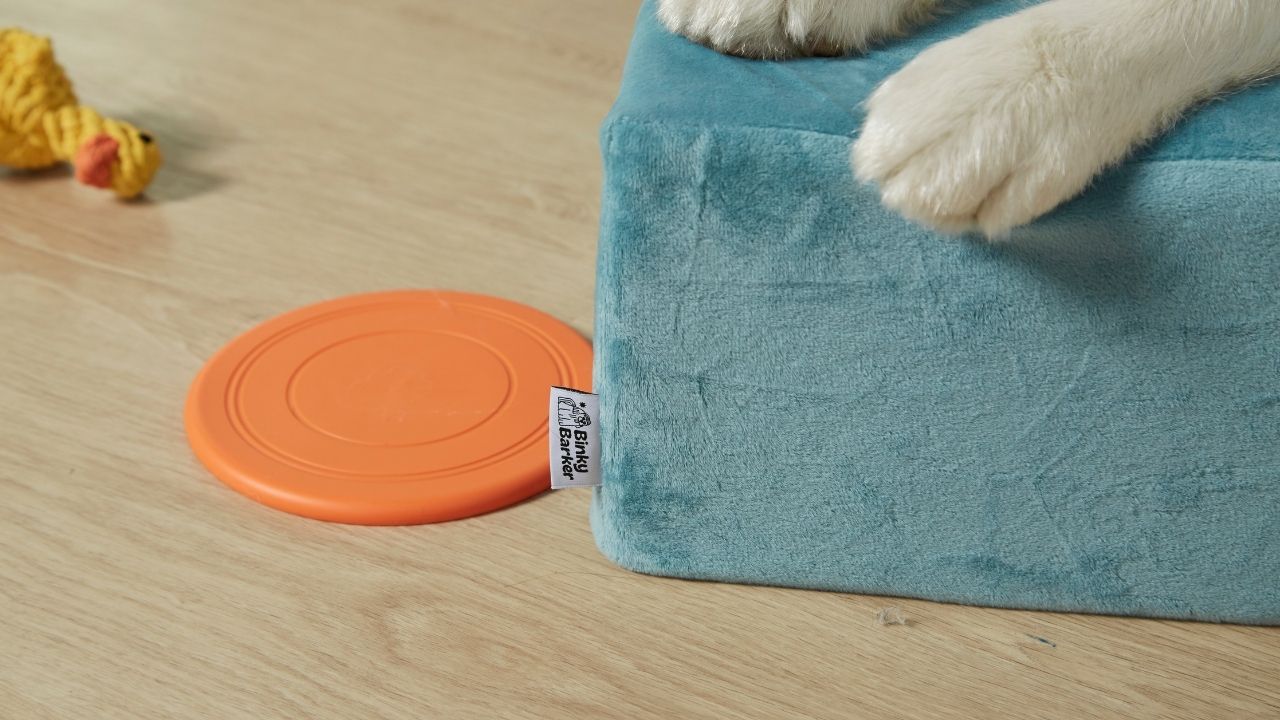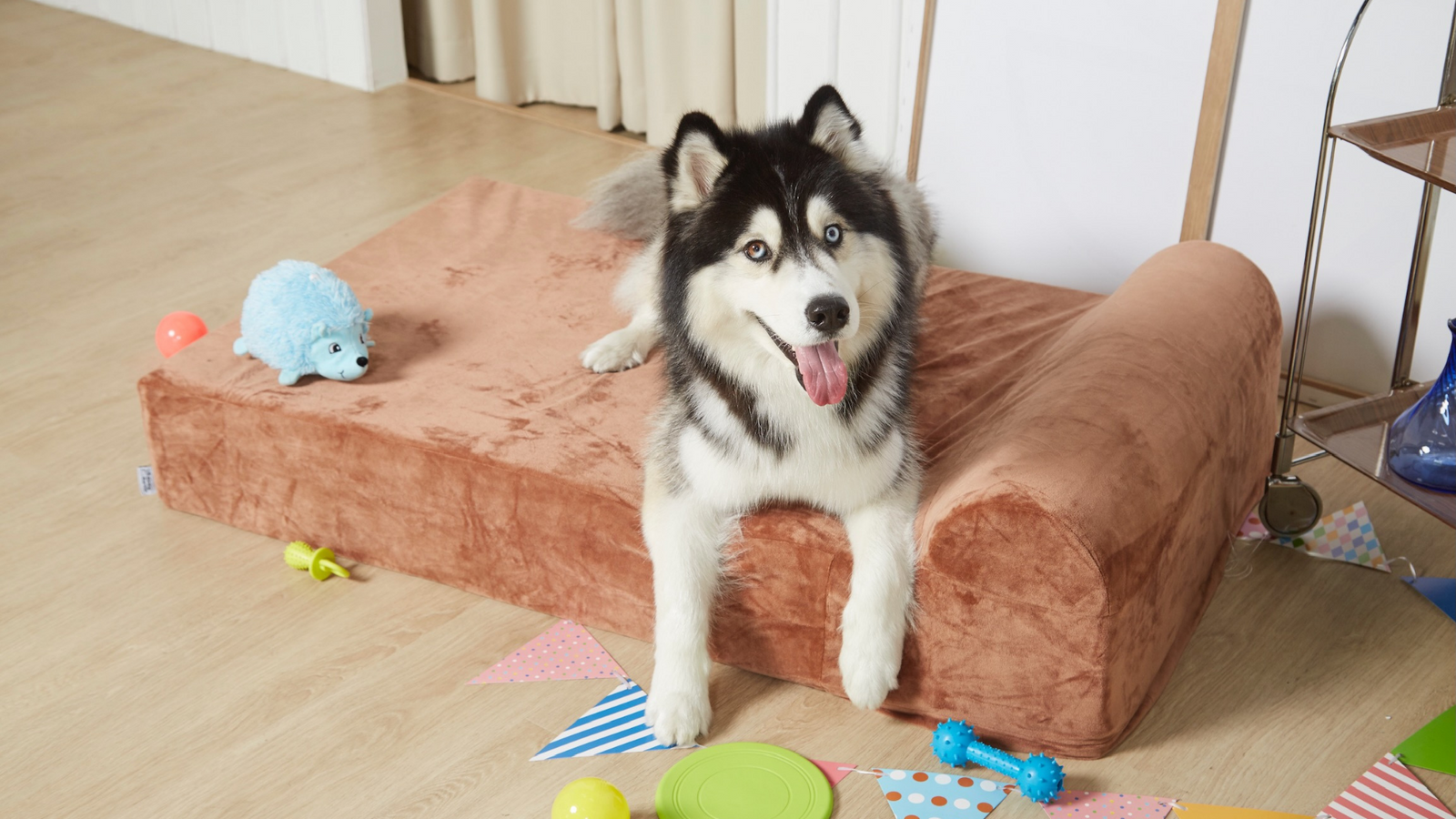
Article by George Manning
It’s not just older dogs that suffer from joint issues. 20% of dogs over 1 year old get osteoarthritis (arthritis). This makes it one of the most common problems dogs experience.
If you are now asking, what can I do? We’ve summarized key points so you can be ready and know what to do next.
Is Your Dog in Pain?
Dogs are hard-wired to hide pain. They evolved from wolves that must show they are healthy to reduce threats to their life. This trait means that your dog might not make it clear that he is suffering from joint pain. But there are signs to look out for. This list has some of those signs:
Signs in behavior:
- ✔️ Hiding away, when your dog doesn’t normally hide
- ✔️ Less energy and excitement than usual
- ✔️ Change in personality, not his usual self
- ✔️ Wanting more affection than normal
- ✔️ Doesn’t want to move
- ✔️ Unusual vocal noises (whining or growling)
- ✔️ Bad reaction when touched
- ✔️ Reduced interest in food
Physical signs:
- ✔️ Stiffness
- ✔️ Limping
- ✔️ Loss of muscle
- ✔️ Difficulty getting up from laying down
- ✔️ Trouble jumping, climbing stairs, and playing
- ✔️ Cracking noises when moving
If your dog shows one or more of these, it may be a sign of joint pain or even arthritis. If many signs are obvious, seek veterinary help. If the issue seems very mild or you would like to reduce the chance of issues happening, continue to explore this article.
Dog Health: Arthritis and More Explained
Much like in humans, dog joints are connected by a ball and socket. Simply put, issues with the joints mean that the ball and socket do not connect smoothly and normally.
There are genetic conditions that affect dogs’ joints. Most commonly hip dysplasia. This is more likely to occur when a dog’s parents had the same condition. Like arthritis, it more often happens in larger breeds like retrievers and German shepherds. But just like arthritis, it can happen in smaller breeds too.
Arthritis in dogs can happen in the knee, elbow, shoulder, ankle, wrist, spine, or hip. It’s caused by trauma, inflammation, old age, and obesity. It can be worsened by a bad sleeping situation. This is why careful treatment of your dog’s joint health early on is so important.

@whitefluffy_floof, Maltese, had 2 knee surgeries.
What is an Orthopedic Dog Bed?
Even if your dog is not suffering from joint pain, it is wise to ensure that they have the right environment at home to promote healthy joints. This is so nothing bad happens in the future. When your dog has a diagnosed joint, muscle, or spine condition, the same care applies. So an orthopedic dog bed can be a solution.
Orthopedic dog beds are designed with your dog’s joints, spine, and muscles in mind. They are made from orthopedic-grade memory foam. This material provides support to pressure points in your dog’s body. So when your dog touches the bed, the bed responds. The result is that the pressure on your dog’s body is spread more evenly and this provides support and relief.
Regular vs Orthopedic Dog Bed
The world of dog beds is changing, and orthopedic beds are starting to become the new normal.
The main difference between orthopedic and ‘regular’ dog beds is the amount of support. With regular dog beds, the lack of filling means that your dog’s body often touches the floor. When he puts his paw onto the bed, the paw makes a connection to the hard floor. Orthopedic beds act as a ‘buffer’ between your dog and the floor. This means that there is no direct connection. The result is better joint health for your dog.
So, why do regular dog beds still exist? Well, they are usually cheaper, and they ‘get the job done’ for most owners. But if you’re here, you’re probably not most owners. You want to make sure your dog is as happy and healthy as he can be.
When we buy a bed for ourselves, we take time and effort to make sure we get the right bed. In this way, it makes sense to take the same time and effort for our dogs.
The next section will give you more information on how to get the right bed for your dog.
If you’re looking to explore options now, Binky Barker has you covered. You can discover our orthopedic bed right here.

The Binky Barker Orthopedic Dog Bed - Waterproof and Washable
Sleeping Style: Observe and Learn
Every dog sleeps differently. Sometimes they like to stretch out, other times they want to curl up small. Check in on your dog and watch them sleeping a few times. Does she like to have a raised spot to rest her head? Is she often placing her back against something? If you notice a pattern, this will help you to decide what kind of sleeping situation suits her best.
For example, if your dog stretches all her legs out, find a bed that is a bit bigger than your dog. Or if she likes to place her back against something, you can put something like a pillow and make a wall. Resting her head on something? A raised spot on the bed will suit her.
Try to keep the location of the bed the same. This is so the dog knows her ‘safe place’ where she can go to rest.

Home Remedies For Your Dog’s Joints
Finally, your dog’s orthopedic health is not just about their bed, but other areas too. Here we discuss some key home remedies for your dog’s joint health.
Diet. Studies show that joint issues and conditions are improved by reducing weight. The reason is simple. Less weight means less pressure on your dog’s joints. Your vet is best qualified to help you manage your dog’s diet and weight. However, we can provide two tips:
Keep a strict feeding routine. Avoid feeding your dog ‘whenever she is hungry’. Instead, feed her the right amount for her breed and at specific times in the day. The same amounts at the same times every day.
Treats are just that: treats. They are useful for rewarding good behavior on special occasions. You can also break the treat up into smaller pieces and she will probably not notice.
Training. With trauma (injury) a cause of arthritis, training can help to reduce accidents. Basic leash, heel, and recall training mean you can stop your dog from hurting herself. So if you find your dog in a risky situation, training can help. If this is new to you, start out by reading credible resources on these topics. You might then find a local class or 1on1 training useful.
Nutrition supplements. There are a few natural supplements your dog can benefit from. Glucosamine is commonly recommended by vets and is widely available in pet stores. This natural supplement can give your dog relief, by helping repair the bits between the joints (cartilage). Omega-3 can also help by reducing inflammation. Both glucosamine and omega-3 are natural and used in humans too, so they are safe.
Balanced exercise. Consistency is key here. If your dog is suffering from joint pain you want to do plenty of short walks instead of a few long ones. Try combining walks away from home with garden exercise. Swimming is an option too. Keep it light. Exercising your dog too hard might cause unwanted pressure on joints. For example, if your dog likes to play fetch, throw the ball a shorter distance than usual and without too much excitement. You can praise them after they come back.
Ramps. These can help a dog move up into the car or other hard-to-reach areas. Preventing hard landings from jumping is vital to keeping your dog’s joints pain-free and healthy. So a ramp can help them move from the ground to a high spot and the other way around.
Orthopedic dog bed. Beds designed for orthopedic health can provide relief and prevent problems from happening or getting worse. Check out “What is an orthopedic dog bed?” above to learn more about them.

Wrapping things up
With this article, you can be better equipped for your dog’s orthopedic health. As we talked about at the start, orthopedic problems can happen at any time in your dog. The first step to a better future for your dog is to ‘train’ yourself with information. We hope this article serves well as your first step.
It’s always important to seek veterinary help if you think your dog is suffering from a condition discussed in this article.


